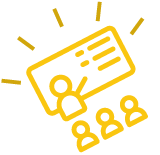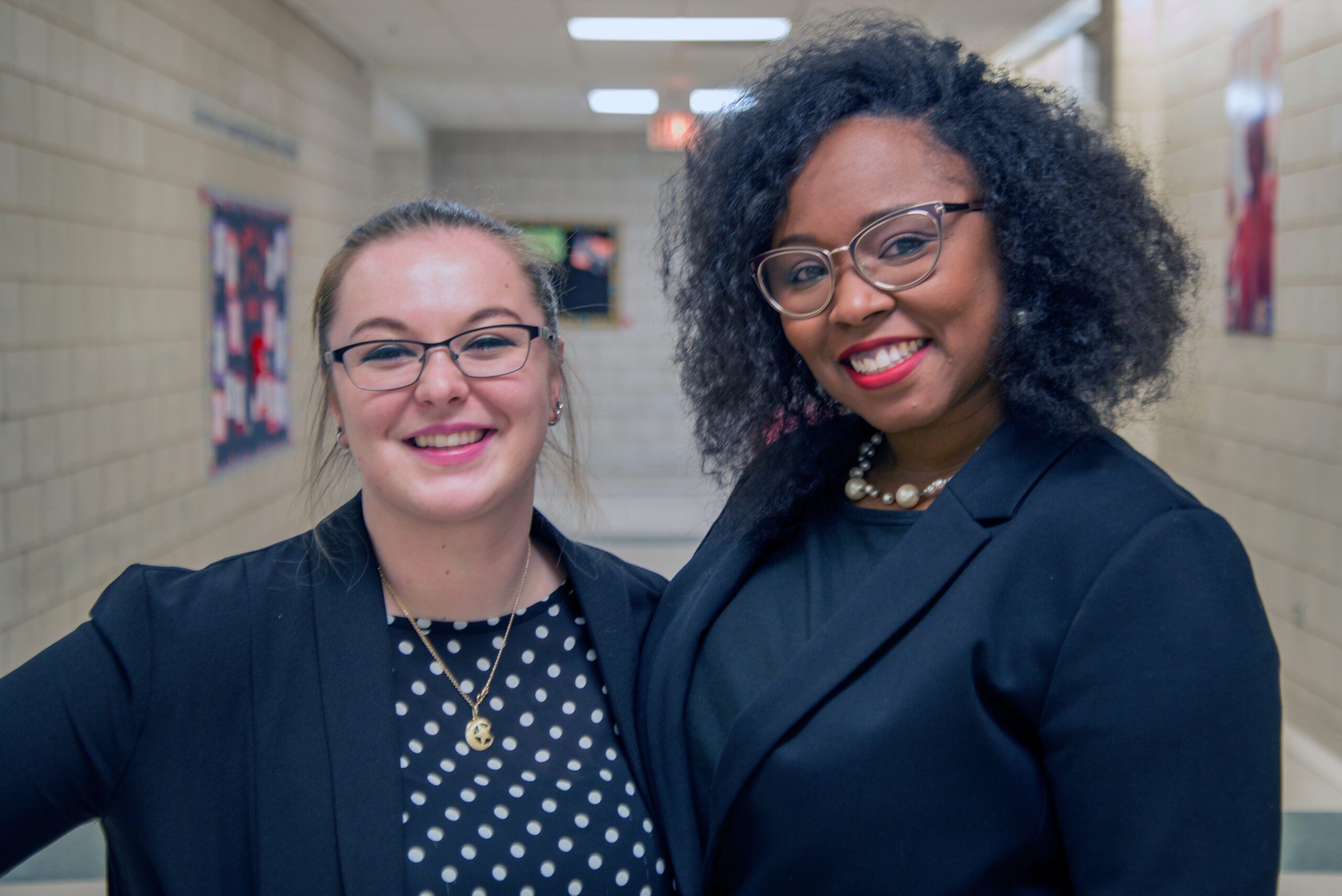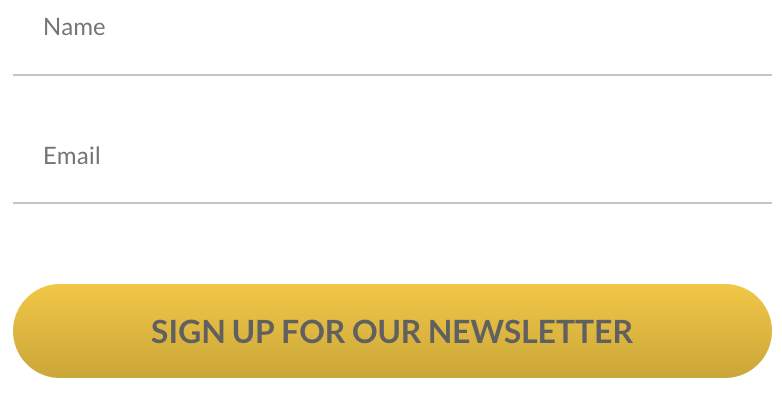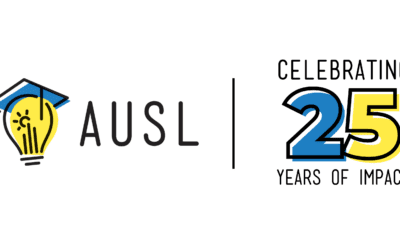[vc_row css=”.vc_custom_1519663218686{padding-bottom: 20px !important;}”][vc_column width=”1/2″][vc_single_image image=”5507″ img_size=”full”][/vc_column][vc_column width=”1/2″][vc_column_text]This AUSLinnovates story is drawn from an interview with Principal Aquabah Gonney and Edina Malagic, eighth grade teacher, of Lewis School of Excellence in Chicago’s North Austin neighborhood. [/vc_column_text][/vc_column][/vc_row][vc_row][vc_column][stm_title title_tag=”h3″ sep_enable=”true” title=”Driving Instructional Excellence and Building School Capacity”][/stm_title][/vc_column][/vc_row][vc_row equal_height=”yes” content_placement=”top” css=”.vc_custom_1519662923698{padding-bottom: 50px !important;}”][vc_column width=”1/2″][vc_column_text]AUSL was founded as a teacher residency program, focused on creating highly effective teachers. This belief in excellence in teaching as the key to transformative student learning has evolved as AUSL has evolved and underpins all of our day-to-day work across our network of public neighborhood schools.[/vc_column_text][/vc_column][vc_column width=”1/2″][stm_icon_box view_style=”style-1″ text_alignment=”center” icon_color=”custom” title=”Create highly-effective teachers and leaders” descr=”We develop, place, and advance high-quality teachers and future leaders by providing targeted and scaffold-ed pathways” icon_fontawesome=”stm-icon stm-icon-doll” icon_color_custom=”#7ebb50″ icon_size=”60px” css=”.vc_custom_1519674399730{border-top-width: 2px !important;border-right-width: 2px !important;border-bottom-width: 2px !important;border-left-width: 2px !important;border-left-color: #7ebb50 !important;border-left-style: solid !important;border-right-color: #7ebb50 !important;border-right-style: solid !important;border-top-color: #7ebb50 !important;border-top-style: solid !important;border-bottom-color: #7ebb50 !important;border-bottom-style: solid !important;}”][/vc_column][/vc_row][vc_row][vc_column][vc_video link=”https://youtu.be/JxJnzbzYqRM” el_width=”80″ align=”center”][vc_column_text]
“You are around so many people that have such a common goal and a common vision, and I believe that as principals and as leaders we have to make sure that we develop our teachers to have that same level of drive and ownership for this work. Because it can’t just be the principal leading, you know. That’s that’s old school. We can’t do it that way anymore. We know that it doesn’t work.”
[/vc_column_text][vc_column_text]Today, we strive to drive professional learning across all instructional levels of the school— including experienced teachers, teacher leaders, and, of course, principals.
And this focus has enabled us to unlock hidden capacity and capability in our teachers and leaders and, in turn translated to more effectively unlocking the potential of our students.[/vc_column_text][vc_video link=”https://youtu.be/hNHOlHXTN3s” el_width=”80″ align=”center”][vc_column_text]
“Having really strong systems in place to promote professional learning, and just understanding around curriculum, helps our teachers and it really builds the capacity of our entire school environment. Our students benefit from it. Our teaching staff benefits from it. But most importantly our teacher leaders are put in a place where they are the forefront of that work. They are the face of the work. It’s not about the principal. It’s about the teacher leaders, and what they’re able to then turn key to the rest of the school.”
[/vc_column_text][/vc_column][/vc_row][vc_row][vc_column][stm_title title_tag=”h3″ title_color=”blue” sep_enable=”true” title=”What is High-Quality Professional Learning at AUSL?”][/stm_title][vc_column_text]In our network, high-quality professional learning* occurs when:
1. Space and time is created for regular collaboration, feedback, and action (the learning conversation).[/vc_column_text][vc_row_inner equal_height=”yes” content_placement=”middle”][vc_column_inner width=”1/2″][vc_video link=”https://youtu.be/lFIgCQqVS-Q”][/vc_column_inner][vc_column_inner width=”1/2″][vc_column_text]
“I feel like one of the things teachers don’t get to do as much as we would like to, is have time to actually reflect on our practice, because that’s what makes you ultimately a better teacher.”
[/vc_column_text][/vc_column_inner][/vc_row_inner][vc_row_inner equal_height=”yes” content_placement=”middle”][vc_column_inner width=”1/2″][vc_column_text]
“What we found is that there wasn’t enough teacher voice within our daily in-and-out of everyday life. And unfortunately since our teachers are on the ground floor, they’re the ones that are in front of kids we needed that voice in order to be able to move the school.”
[/vc_column_text][/vc_column_inner][vc_column_inner width=”1/2″][vc_video link=”https://youtu.be/8nY5KwyD2tA”][/vc_column_inner][/vc_row_inner][vc_column_text]2. The learning conversation is focused on what’s actually happening in the classroom with the teacher (instruction) and the content (unified, rigorous, and appropriately paced curriculum).[/vc_column_text][vc_column_text]*Approach influenced by Linda Darling-Hammond’s research and reflective of the elements summarized in the Learning Policy Institute’s “Effective Teacher Professional Development” Report (Jun 05, 2017)[/vc_column_text][vc_column_text]Our professional learning conversations are anchored to real and specific lessons taught by our teachers and hinge on reflection on the challenges they faced in engaging and driving their students’ learning. This level of focus grounds the professional learning conversation by providing tangible evidence for and path toward the necessary changes in practice.[/vc_column_text][/vc_column][/vc_row][vc_row][vc_column][stm_title title_tag=”h3″ title_color=”blue” sep_enable=”true” title=”When and Where does Professional Learning Occur at AUSL? “]Professional learning is embedded into a continuum of supports along each teacher’s development journey, starting with deepening their instructional practice and building to growing their capacity to pursue school-based leadership opportunities. [/stm_title][vc_column_text]In practice, ensuring and protecting the space and time for professional learning to occur is as vital as the focus of that professional learning. Across our network of public neighborhood schools, we have created regular opportunities for targeted problem-solving and feedback.
[/vc_column_text][vc_column_text]1. School-based Grade-Level Cluster Collaboratives: grade-level teams, facilitated by a Principal or school-based/network-based instructional leader meeting weekly to reflect on practice and collectively plan to address curricular, instructional, or other student challenges.[/vc_column_text][vc_row_inner equal_height=”yes” content_placement=”middle”][vc_column_inner width=”1/2″][vc_column_text]
“It’s just a time and a space to really hone in and focus on, you know what are we doing in our classrooms and what are other people doing, and that you know we can kind of share those ideas as well as really deeply reflect.”
[/vc_column_text][/vc_column_inner][vc_column_inner width=”1/2″][vc_video link=”https://youtu.be/rF2hIbIVZS4″][/vc_column_inner][/vc_row_inner][vc_row_inner equal_height=”yes” content_placement=”middle”][vc_column_inner width=”1/2″][vc_video link=”https://youtu.be/rDxUCtSWc9s”][/vc_column_inner][vc_column_inner width=”1/2″][vc_column_text]
“One of I think the most powerful things in this was that our teachers were then opening up their classrooms to their peers and instead of us saying, ‘Hey listen this is a really great practice’ as administrators, the teachers were saying, ‘Hey, listen you really got to try this because in my class it works.'”
[/vc_column_text][/vc_column_inner][/vc_row_inner][vc_column_text]2. Network-wide Professional Learning Teams: grade-level and department/content area teams, facilitated by a Professional Lead Teacher, Principal, Coach, or Director of School Leadership, meeting quarterly to discuss and address a problem of practice related to a past or upcoming lesson that teachers will be delivering.[/vc_column_text][vc_row_inner equal_height=”yes” content_placement=”middle”][vc_column_inner width=”1/2″][vc_video link=”https://youtu.be/QrFRUdVLb9g”][/vc_column_inner][vc_column_inner width=”1/2″][vc_column_text]
“Talking to other teachers in the network you’re seeing people that are teaching the same things as you. The same curriculum. And you know with either different time blocks or with different constraints that you might have in different children obviously, but at the end of it they must have some kind of great strategies. And so when you’re listening to people you just pick up on so much information of really what works and what doesn’t work.”
[/vc_column_text][/vc_column_inner][/vc_row_inner][vc_row_inner equal_height=”yes” content_placement=”middle”][vc_column_inner width=”1/2″][vc_column_text]
“Our teacher leaders can then turn key that professional development immediately because the PLT sessions are so in sync with what’s happening in each one of our buildings, that it just it’s a nice ebb-and-flow. You know, they get the learning they bring it back to the schools, and they’re able to disperse that amongst the community.”
[/vc_column_text][/vc_column_inner][vc_column_inner width=”1/2″][vc_video link=”https://youtu.be/kngL5OJxr7s”][/vc_column_inner][/vc_row_inner][vc_column_text]3. School-based Instructional Leadership Team: principal-led cross-departmental/grade-level team of teachers gathering weekly to discuss and address school-wide challenges or deep dive on instructional challenge to be shared through grade-level cluster collaboratives[/vc_column_text][vc_row_inner][vc_column_inner][vc_video link=”https://youtu.be/m2EwToD3iO4″ el_width=”80″ align=”center”][vc_column_text]
“To really cultivate the leaders of tomorrow. And so many of our ILT members were once residents, they’re also people that lead on committees in our school, and really just step up as leaders in saying, ‘Hey this is something that I’m really passionate about, that I believe in, and I want to be the first person to really implement the change.'”
[/vc_column_text][/vc_column_inner][/vc_row_inner][vc_column_text]4. School-based and Curriculum Coach Support: grade-level or department/content area-focused coach that advises and supports teachers individually on instructional or curricular practice based on regularly/weekly observation.[/vc_column_text][vc_video link=”https://youtu.be/kzDt93NIKr8″ el_width=”80″ align=”center”][vc_column_text]
“My AUSL-based coach, she really gave the learning over to me. So, I just really felt like I was in control of what was happening in the room and the things that she was adding were resources were suggestions. It was never something that she came in and was just like, ‘You’re doing this, this, and this wrong.’ You really got to speak about what you felt like wasn’t going well.”
[/vc_column_text][vc_column_text]5. Principal Coaching Support: regular observation to assess and monitor longitudinal improvements in practice, providing individualized support to teachers and teacher leaders based on upcoming content as needed.[/vc_column_text][vc_video link=”https://youtu.be/jPGB1yfbSkU” el_width=”80″ align=”center”][vc_column_text]
“The biggest piece, is just like our students, we want to give what they need. And I think that that makes the learning a lot more relevant. They know that we’re not just doing this one-size-fits-all approach to education because we recognize every teacher is different every student is different every classroom is different. And so we have to differentiate what we do in order to push student achievement.”
[/vc_column_text][vc_column_text]6. Principal Collaboratives: Directors of School Leadership (e.g., principal managers/coaches) work regularly to bring together and deepen principals’ knowledge and practice around key focus areas of upcoming content through coaching and cross-principal collaboration so they can better support their teams.[/vc_column_text][vc_video link=”https://youtu.be/ljZhmti5QAg” el_width=”80″ align=”center”][vc_column_text]
“I’ve received so much coaching in terms of how to coach teachers. And so instead of me going in blind we do deep dives into the curriculum. What are the nuances? What are the things that I need to know as a leader when I’m sitting in classrooms? So that I can really tailor and focus my attention to the things that are going to matter most toward student achievement.”
[/vc_column_text][/vc_column][/vc_row][vc_row disable_element=”yes”][vc_column][stm_title title_tag=”h3″ title_color=”blue” sep_enable=”true” title=”What Conditions Drive High-Quality Professional Learning?”]Professional learning is embedded into a continuum of supports along each teacher’s development journey, starting with deepening their instructional practice and building to growing their capacity to pursue school-based leadership opportunities. [/stm_title][vc_column_text]AUSL not only invests in creating these spaces for teachers, but also in building the resources that drive this work. These include:[/vc_column_text][vc_column_text]1. Consistent and High-Quality Curriculum (Engage AUSL): Our implementation and adaptation of Engage AUSL has set the table for teachers from the beginning of each school year, giving them space to focus on elevating their teaching practice.[/vc_column_text][vc_row_inner][vc_column_inner width=”1/2″][vc_video link=”https://youtu.be/X4ENYSsLYFM”][/vc_column_inner][vc_column_inner width=”1/2″][vc_video link=”https://youtu.be/tMGvWryTnZg”][/vc_column_inner][/vc_row_inner][vc_column_text]2. Clear Protocols for School and Classroom Culture and Climate: Our focus on creating enriching school and classroom environments in all of our schools enables students to feel safe and engage with their school work more productively.[/vc_column_text][vc_video link=”https://youtu.be/Ot_J6Zcc3ZY” el_width=”80″ align=”center”][vc_column_text]3. Wraparound Student Supports: Our students come into our schools from challenging walks of life that often create mental noise. Additional social, emotional, and extracurricular supports have and continue to create that mental space for our students to engage fully in their learning.[/vc_column_text][vc_video link=”https://youtu.be/i7wV5xF35iI” el_width=”80″ align=”center”][/vc_column][/vc_row][vc_row][vc_column][vc_column_text css=”.vc_custom_1519757688746{border-top-width: 2px !important;border-right-width: 2px !important;border-bottom-width: 2px !important;border-left-width: 2px !important;padding-top: 25px !important;padding-right: 25px !important;padding-bottom: 25px !important;padding-left: 25px !important;border-left-color: #6daf3d !important;border-left-style: solid !important;border-right-color: #6daf3d !important;border-right-style: solid !important;border-top-color: #6daf3d !important;border-top-style: solid !important;border-bottom-color: #6daf3d !important;border-bottom-style: solid !important;}”]
With this focus on professional learning, AUSL drives instructional excellence to create transformative teachers engaged not only in driving student achievement in his/her classroom, but also in the classrooms of others and in the school building overall.
[/vc_column_text][vc_column_text]Our system of distributed leadership has created a strong and enduring professional learning culture where there is collective ownership over the outcomes of the work and of each student — and it is the most impactful driver of our success as a network of public neighborhood schools.[/vc_column_text][vc_column_text]Next month, be on the lookout to understand more about the conditions that help foster our professional learning and enable our teachers and leaders to increase their impact.[/vc_column_text][/vc_column][/vc_row][vc_row][vc_column width=”1/4″][stm_btn_simple btn_style=”flat” btn_color=”custom” btn_link=”url:http%3A%2F%2Fwww.auslchicago.org%2Fblog%2F|||” btn_link_text=”Return to Blog” btn_color_custom_bg=”#1e7fc3″ btn_color_custom_hover_bg=”#000000″ btn_color_custom_text=”#ffffff” btn_color_custom_hover_text=”#ffffff”][/vc_column][vc_column width=”1/4″][stm_btn_simple btn_style=”flat” btn_color=”custom” btn_link=”url:http%3A%2F%2Fwww.auslchicago.org%2Fabout%2Fimpact-through-innovation%2F|||” btn_link_text=”Innovation Zones” btn_color_custom_bg=”#1e7fc3″ btn_color_custom_hover_bg=”#000000″ btn_color_custom_text=”#ffffff” btn_color_custom_hover_text=”#ffffff”][/vc_column][vc_column width=”1/4″][stm_btn_simple btn_style=”flat” btn_color=”custom” btn_link=”url:http%3A%2F%2Fwww.auslchicago.org%2Fdonate%2F|||” btn_link_text=”Donate” btn_color_custom_bg=”#1e7fc3″ btn_color_custom_hover_bg=”#000000″ btn_color_custom_text=”#ffffff” btn_color_custom_hover_text=”#ffffff”][/vc_column][vc_column width=”1/4″][stm_btn_simple btn_style=”flat” btn_color=”custom” btn_link=”url:http%3A%2F%2Fwww.auslchicago.org%2Fausl-advisory-services%2F|||” btn_link_text=”Advisory Services” btn_color_custom_bg=”#1e7fc3″ btn_color_custom_hover_bg=”#000000″ btn_color_custom_text=”#ffffff” btn_color_custom_hover_text=”#ffffff”][/vc_column][/vc_row]
















